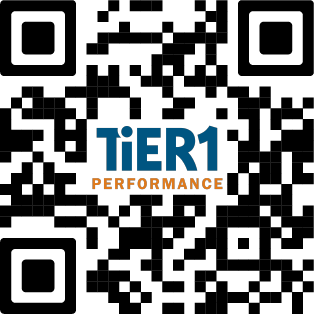Leading Strategy Activation Requires a People-First Approach
Greg Harmeyer, TiER1
 Almost every organization talks regularly about strategy. Yet too often, they take for granted the critical element that makes strategy effective—the people who will be doing things differently and producing new results to make the strategic vision a reality.
Almost every organization talks regularly about strategy. Yet too often, they take for granted the critical element that makes strategy effective—the people who will be doing things differently and producing new results to make the strategic vision a reality.
Strategy activation eliminates the gap between development and execution. It moves people into action. The skills, tactics, techniques and approaches that fit under this heading of strategy activation are broad. They encompass many topics and skills—brand, culture, technology, neuroscience, communication and visual design, to name a few.
In doing this work, TiER1 consultants have leveraged several fundamental concepts to help IT offices at client organizations strengthen their approach to strategy activation. Here are three key concepts to consider:
1. Craft a compelling story
Successful strategy activation depends on clarity, repetition and storytelling. Too often strategic initiatives like digital transformation or major systems implementations start with a company announcement. The purpose remains high level and the intention is left to interpretation. What winds up happening is the narrative is written by the recipients of the message. Confusion and tension begin setting in before things even start.
Instead, begin with a connection to the organization’s purpose to vividly articulate why the strategy makes sense. Leverage holistic branding to paint the vision of the journey ahead, as well as a layered communication strategy that reaches each individual where they are and helps them process where they will be going. Share compelling stories that give shape and depth to the journey that is underway.
2. Design the employee experience
Experience design is a critical piece in the strategy activation process. The tools, technologies and general infrastructure that exist in an organization can be invaluable resources in the strategy activation process. Think through the employee’s experience and the entire ecosystem that surrounds them, including numerous systems and points of integration. Effective strategy activation requires us to design the employee’s work environment to maximize their effectiveness.
For example, robust onboarding platforms and employee support systems are essential for both strategy activation and ongoing iteration of the strategy. The employee onboarding experience should help new hires see, hear and live the organization’s digital strategy before their first day on the job.
3. Embrace an iterative approach
Finally, recognize that strategy activation is not linear; it’s iterative. Neither strategy nor strategy activation are ever “finished.” It’s important to embrace this mindset. The process of strategy activation requires feedback loops whereby messages, ideas, priorities and processes are deployed to the organization, and then data and information are gathered in the deployment process to be fed back into the strategy activation plan as well as the strategy itself.
Leading strategy activation through your people means letting go of getting everything right up front. We’re all playing the game as we re-write the game plan. The key is to have empathy for the players: the people who are bringing your strategy to life. Taking steps that make their lives easier and empower them to contribute—even as the game plan changes—will realize the full potential of your strategy investment.
 For more fundamental concepts on strategy activation, read Greg’s full article on the TiER1 website.
For more fundamental concepts on strategy activation, read Greg’s full article on the TiER1 website.